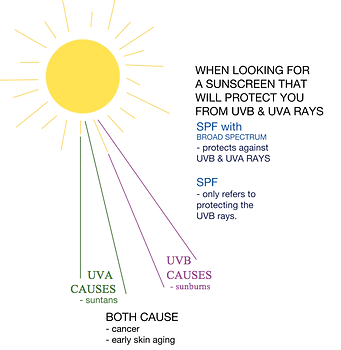
Melanoma
Risk Factors:
The Danger of UV Exposure
Most melanoma cases are caused by ultraviolet radiation (UV) related mutations. These powerful electromagnetic waves are capable of entering our skin and causing genetic damage to our DNA. There are two main types of UV rays: UVA and UVB. Scientists believe that UVB rays, which have a shorter wavelength, are primarily responsible for melanoma incidence. The longer UVA waves cause other skin cancers, but have not been shown as a major factor in melaoma pathogenesis.
Melanoma is most common in Australia and New Zealand. These countries lie underneath a hole in the ozone layer, located in the stratosphere. Ozone is a triatomic form of oxygen that is formed using energy from the ultraviolet radiation, which it stores in chemical bonds. When it is later broken apart into a single oxygen atom and a diatomic oxygen molecule, the ozone releases the energy, but not in UV rays. The result is that the ozone layer blocks out dangerous UV waves. Australia and New Zealand, which do not benefit from its protection, have higher incidence rates of melanoma than anywhere else in the world.
Research also shows that childhood exposure is a key factor in determining if someone will develop melanoma later in life. Surprisingly, cumulative ultraviolet exposure, which causes many other types of skin cancer, does not seem to be a significant factor in causing melanoma. Sunburn and brief, intense sun exposure has been identified as more dangerous than consistent but gentle exposure. In fact studies show that people with outdoor jobs that expose them to sunlight regularly are less likely to develop melanoma than people with indoor jobs who are only exposed to UV in short bursts. Melanoma is also more likely to occur later in life. Presumably because by that time people have had more chances to be exposed to intense UV radiation.
In addition, it is important to note that ten percent of melanoma patients have a family history of melanoma. In these cases the patients are genetically susceptible to melanoma. People with a family history of melanoma generally have a mutation in the CDKN2A gene. The CDKN2A gene is responsible for coding the protein p16, which acts as a tumor suppressant.

Although UVA rays won't cause melanoma, it is important to protect yourself from both.
